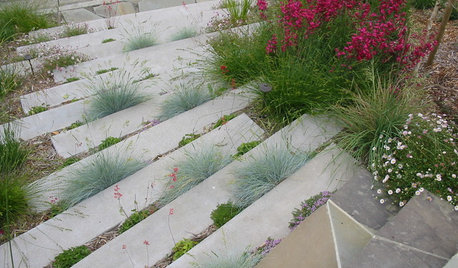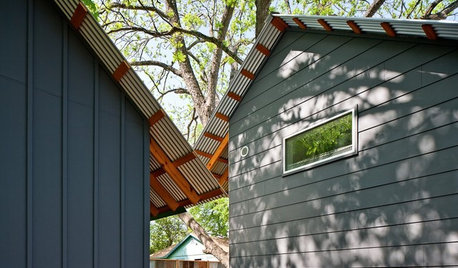substitute for greens?
treelover
17 years ago
Related Stories

FLOWERS AND PLANTSMyoporum Parvifolium a Lush Green Alternative to the Lawn
Plant this Australian native in mild-winter climates as a low-maintenance, semi-drought-tolerant ground cover
Full Story
MOST POPULAREasy Green: 23 Ways to Reduce Waste at Home
Pick from this plethora of earth-friendly ideas to send less to the landfill and keep more money in your pocket
Full Story
GARDENING AND LANDSCAPINGPatio Pavers Go Green in Between
Kind to the environment and easy on the eyes, pavers with moss or other foliage in the joints create a charming permeable hardscape
Full Story
BATHROOM DESIGNGreen and Clean: Ventilate for a Healthy Bathroom
Ridding your bathroom of excess moisture is vital for indoor air quality. Here's how to do it best
Full Story
PLANTING IDEASPlant Your Hardscape for Unexpected Green
Nestle greenery among pavers, steps and more for a yard brimming with life and creativity
Full Story
GARDENING GUIDESGet on a Composting Kick (Hello, Free Fertilizer!)
Quit shelling out for pricey substitutes that aren’t even as good. Here’s how to give your soil the best while lightening your trash load
Full Story
REMODELING GUIDESFiber Cement Siding Takes a Front Seat
Not just a wood or vinyl substitute, fiber cement is a stellar siding choice in its own right for modern home exteriors
Full Story
DECORATING GUIDESStretch Your Design Possibilities With Polyester
You know it from psychedelic stretch pants (er, maybe not personally). But did you know it's now in rugs, coatings and glass substitutes?
Full Story
GARDENING AND LANDSCAPINGGrow a Lush Privacy Screen
No need to wait forever for patio privacy the green way. These 10 ideas will get your screening up and running in no time
Full Story








donn_
blutranes
Related Professionals
Maple Valley Landscape Architects & Landscape Designers · Erie Landscape Architects & Landscape Designers · Jennings Landscape Architects & Landscape Designers · Mooresville Landscape Contractors · Bridgeport Landscape Contractors · Costa Mesa Landscape Contractors · El Segundo Landscape Contractors · El Sobrante Landscape Contractors · Methuen Landscape Contractors · Peoria Landscape Contractors · West Orange Landscape Contractors · Ankeny Decks, Patios & Outdoor Enclosures · Issaquah Decks, Patios & Outdoor Enclosures · Spanaway Decks, Patios & Outdoor Enclosures · Pleasant Grove Decks, Patios & Outdoor Enclosurespablo_nh
bpgreen
led_zep_rules
Kimmsr
sydseeds
treeloverOriginal Author
joytosew
donn_
blutranes
vance8b
blutranes
kqcrna
donn_
blutranes
gardenfanatic2003
blutranes
kqcrna
tiffy_z5_6_can
kqcrna
blutranes
vance8b
blutranes
tiffy_z5_6_can
donn_
blutranes
donn_
kqcrna
donn_
kqcrna
andi956